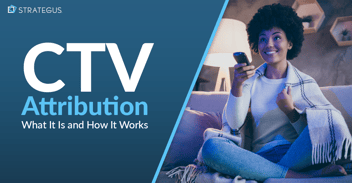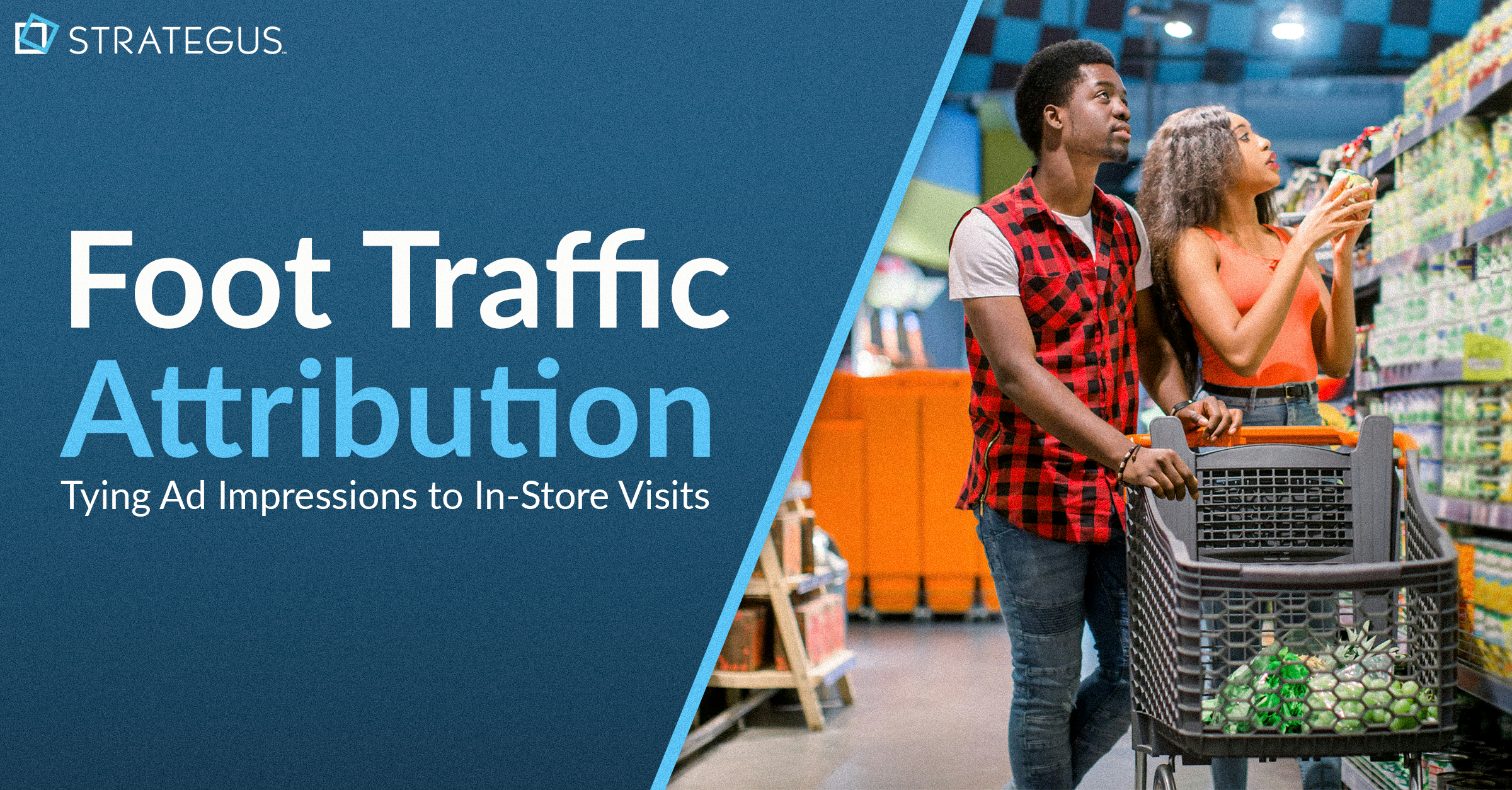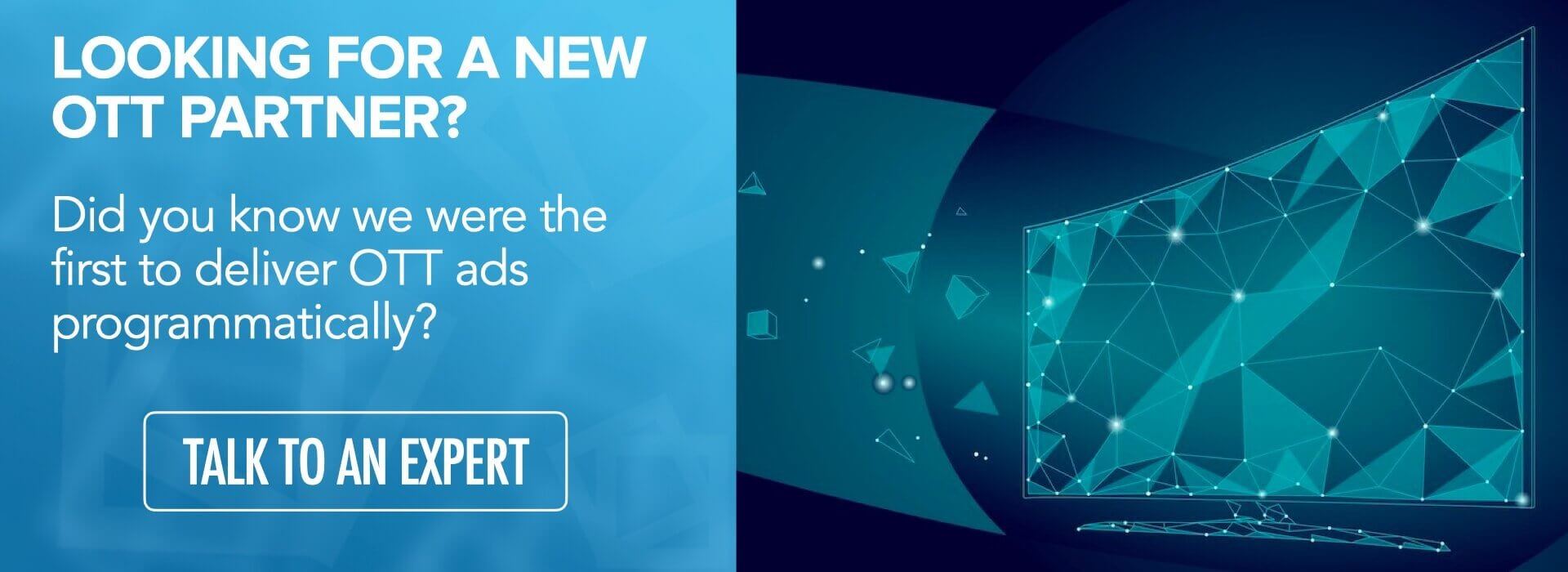- Home
- Strategus Blog
- The Guide to Creating Brand Lift with OTT/CTV Advertising
The Guide to Creating Brand Lift with OTT/CTV Advertising
 Andy Dixon
Andy Dixon
10 minutes read

Over-the-top (OTT) and connected TV (CTV) advertising have quickly become an integral part of every successful marketing strategy. Consumers are cutting cords by the millions and not looking back. As a result, video consumption is up, and marketers are scrambling to use it to their advantage.
The problem is that not many are familiar with brand lift, measuring it, and improving the impact their advertisements have on viewers throughout their buyer journey.
What's the solution?
Knowledge is power. The best solution to any problem that begins with unfamiliarity is getting familiar. Our Strategus team has assembled a solid fundamental guide for advertisers, shining a light on creating (and improving!) brand lift with the help of OTT/CTV advertising.
What Is Pre-Roll Video, and How Can It Lift My Brand?
Video consumption has seen a significant surge in importance in advertising as more consumers prioritize it. Not only have 85% chosen video as their choice for consuming content monthly, but another 73% admit that what they watch influences their purchasing decisions. To reach and resonate with this audience, you'll need to execute a pre-roll video strategy for the ages.
Here are the elements that will need to make up your pre-roll video to be successful:
- Master your target audience: pre-roll video requires in-depth knowledge and understanding of your target audience. You must target and retarget correctly, basing your efforts on the consumer data you've gathered (i.e., demographics, interests, behaviors, likes/dislikes, etc.).
- Optimize frequency: It takes more than a handful of impressions to make a memorable impact on a viewer. Optimizing the number of times your ad is delivered to a viewer ensures that they're not only seeing your brand message but recalling and recognizing it. Keep in mind that ad fatigue is real, so optimizing OTT/CTV content is critical to avoid fatigue.
- Utilize omnichannel tactics: More is not always better in advertising. However, consistency throughout multiple channels is. To maximize your advertising budget and reduce ad-spend waste, target and retarget with only relevant media, using tactics that coincide with your objectives.
Linear TV Extension (LTVE) — What It Is and When to Use It
Today, the biggest misconception is that you can't benefit from traditional TV advertising and OTT advertising — you must choose one or the other. However, even with the rise in streamers and decline in cable TV viewers, there are ways to optimize viewerships by combining your efforts and creating a linear TV extension (LTVE) strategy.
LTVE refers to the process of incorporating OTT channels into your linear TV campaign. With the help of Automatic Content Recognition (ACR) chipset technology, you will be better able to measure the overlap of linear TV and CTV households exposed to your ad content.
Additional benefits include:
- Targeting: you have far more precision and accuracy in targeting with OTT platforms. Since you can control and cap ad frequency, you can ensure the right people get your message to benefit from it without risking fatigue. . What's more, you have more authority over the delivery of sequential campaigns, whereas advertisers had to hope for the best with linear TV.
- Efficiency & Reach: fine-tune your ads to a specific household and audience with LTVE, and you'll ensure that the audience that hasn't seen your content does (and the ones who have — don't see it too much!). The closest you will ever get to theoretical market saturation and coverage is combining your linear TV efforts with OTT targeting to reach the viewers that didn't consume your ad on cable, satellite, and broadcast.
- Testing: every advertiser knows the importance of tracking and testing your marketing by now. With a digital advantage, you can now assess if your viewers respond to your calls to action, the ideal frequency for each specific campaign, the conversion rate for different ads and movements, and which ads spark the most significant engagement between different versions.
>>Read more about the best time to use LTVE in your strategy here
How Does LTVE Optimize Reach for Advertisers
The two most important measurements of any successful marketing campaign are reach and frequency. You have to know how well you were able to reach your audience and how often, to inform the actions you take from this point on. The objective isn't just to increase reach and frequency — but maximize it.
>> Between advertising reach and frequency, are you prioritizing the right metrics?
This is where LTVE comes in for the win. It gives your advertising team access to the data of which households didn't get enough exposure and which didn't receive any at all. This insight can then drive how you curate your content and what content you deliver to viewers, based on what they have and have not been exposed to so far.
Our LTVE methodology:
- Identify the households within your broadcast reach and determine the extent of that exposure.
- Forecast the market households who have not been exposed to your ads or were not exposed enough.
- Reach those households that weren't exposed to your ads with your CTV campaigns.
>> Read the full article here to learn more about how LTVE can optimize your reach
4 Reasons to Implement a Linear TV Extension
The worst thing you can do in marketing is not tapping into all your available methods to ensure you're reaching the right audience. LTVE is the solution to every marketer's ongoing challenge to identify unexposed and underexposed audiences to position your ad delivery better and refine your content to meet their particular needs.
There are several reasons you won't want to miss out on LTVE while your competition is catching wind of its potential. However, there are four significant reasons to get started right away:
- Reach untapped audiences
- Avoid ad fatigue
- Test, measure, and adjust CTV and TV efforts
- Optimize your reach
The truth is, your target audience is still using linear TV to consume content. TV advertising isn't dead like many presume. It's simply changing into an advertising method that requires integration and comprehensive guidance from digitally supported consumer data. You don't need to leave linear campaigns in the past — you need to improve and refine them.
Using White Label OTT/CTV Advertising to Generate Brand Lift
Although it's relatively new to advertising, white-label OTT/CTV advertising is making a substantial mark on the industry. Its growth in popularity among viewers has also made it popular among advertisers, taking the OTT revenue to more than $167 billion by 2025. That's more than double the revenue generated in 2019 ($83.3 billion).
The benefits you'll receive from an enhanced OTT/CTV advertising solution include:
- Targeting: hyper-target and retarget your audience based on relevant consumer data. Control who sees your message and when.
- Results: there's a reason OTT ad spend is rapidly growing, snatching up more significant portions of advertising budgets each year.
- More Control: you control and monitor results, which means you get to make real-time adjustments to improve your stagy at every turn.
- Programmatic process: bid on and win relevant ad space based on your business's specific needs and goals. Even better, do it in a blink of an eye!
- Direct communication: OTT goes over the top of cable and directly to viewers. Benefit from meaningful communication with the right audience.
- Convenience: OTT is convenient for both viewers and advertisers. Viewers prefer OTT to cable, and advertisers have more tools at their hands than TV has ever provided them before.
How Automated Content Recognition Helps Optimize Your Targeting
Close the gap between the numbers you want to hit and the steps you're going to take to convert your leads into sales by improving data-driven platforms and technologies. For example, ACR (automatic content recognition) is precisely what you'll need to optimize your targeting efforts and build a better customer experience for your audience.
ACR recognizes small features of media that a viewer is watching and stores them, thus allowing advertisers to understand where their advertisements are being seen. With this insight, you can either curate it into your queue or recommend relevant material for them to view based on the type of media ACR pinpoints them as watching.
ACR can prove quite helpful for at least three reasons.
- First, ACR has dynamic ad insertion, which means you will no longer intrude on viewers but rather deliver your ads based on their past experiences and behavior.
- Second, you'll benefit from a targeted reach that is backed by consumer data, exposing your ad to viewers without the risk of fatigue and annoyance.
- Third, you'll be able to maximize your omnichannel capabilities with ACR by creating a more cohesive and natural flow across multiple devices — all of which work seamlessly together to reach your objective, not separately.
>> Gain more insight into all the ins and outs of ACR by reading the full article here
ROAS, CTV, and Attribution Tracking: How's it All Connected?
Believe it or not, your advertising budget will never be enough to excuse wasting ad dollars on efforts that aren't hyper-targeted and backed by consumer data to allow you to continuously improve your tactics and strategy. The connection between ROAS (return on ad spend), CTV, and attribution tracking reveals just how to narrow your advertising down to only successful marketing methods.
First and foremost, ROAS is NOT the same as ROI (return on investment). ROAS is the value per dollar of ad spend, while ROI measures the profit of ad spend dollars. When appropriately calculated, you will gain more insight into the value of your CTV ads, revealing the campaigns that are performing at the top and which ones need more work.
In comes attributing tracking as the ultimate missing link. You've tracked your CTV ads and ROAS, but what are your viewers doing after the delivery of your ads? Are they taking action? Strategus' Attribution Suite is a collection of tracking tools that will answer that question and more, tracking eight metrics that follow your viewer's efforts after seeing your ad:
- Website visit
- Online purchase
- Amazon online purchase
- Foot traffic
- After-ad influence
- CPG purchase
- Offline conversion
- Brand lift
CTV Measurement: The Secret to Tracking Brand Lift Effectiveness
You must track brand lift to keep up with and improve the perception of your brand among the public. The insight you gain allows for your video ads to reach and resonate with the right audience on a level that inspires them to take a given action. This can be challenging with more brand/consumer touchpoints. However, it's not impossible with CTV measurement.
CTV measurement is what tracks and measures the results of your campaigns on OTT/CTV platforms. To calculate the success of your CTV advertising, you'll need the help of Strategus' eight functionalities from the Attribution Suite:
- Post-View Website Visit Attribution
- Online Purchase Attribution
- Amazon Online Purchase Attribution
- Foot-Traffic Attribution
- CPG Attribution
- After-Ad Influence
- Offline Conversion Tracking
- Brand Lift/Brand Awareness
>> Keep reading about the secret to brand lift effectiveness by reading the whole article here
Maximize Your Brand Lift Potential With OTT/CTV Advertising And Strategus
The way your target audience perceives you and your brand is essential to your company's growth and success. To create a substantial brand lift, OTT/CTV advertising is vital. There are benefits to OTT and CTV that many marketers had spent decades trying to tap into before Netflix introduced streaming, and viewers jumped on the train without looking back.
What's more, it isn't the only answer to your common marketing challenges. It is a marketing method that compliments a variety of strategies and business objectives, working cohesively with other integrated campaigns to lift your brand and increase your sales. Contact Strategus to create the perfect OTT/CTV advertising campaign that not only lifts your brand but also your business!

Andy Dixon is a seasoned Content Writing Specialist at Strategus, renowned for his expertise in creating engaging and impactful digital content. With over a decade of experience in content creation, Andy has honed his skills in a variety of niches, ranging from technology and marketing to education.
Strategus is a managed services connected TV(CTV) advertising agency with over 60,000+ campaigns delivered. Find out how our experts can extend your team and drive the result that matter most.
Talk to an Expert
Table of Contents
- What Is Pre-Roll Video, and How Can It Lift My Brand?
- Linear TV Extension (LTVE) — What It Is and When to Use It
- How Does LTVE Optimize Reach for Advertisers
- 4 Reasons to Implement a Linear TV Extension
- Using White Label OTT/CTV Advertising to Generate Brand Lift
- How Automated Content Recognition Helps Optimize Your Targeting
- ROAS, CTV, and Attribution Tracking: How's it All Connected?
- CTV Measurement: The Secret to Tracking Brand Lift Effectiveness
Seeking a Custom CTV Strategy That Delivers?
What to read next

Third-Party Data Targeting for CTV: Benefits & Tactics
Third-party data. It’s a term that’s thrown around, and yet few take the time to detail its pros and cons — much less strategies for using...
7 minutes read

First-Party Data Targeting: Benefits and Tactics for CTV Advertising
First-party data is the information that companies collect directly from their customers rather than through intermediaries. Advertisers use this...
10 minutes read

Foot-Traffic Attribution: Tying Ad Impressions to In-Store Visits
The marketing funnel has changed. Today’s shoppers often begin researching products from the comfort of their homes and don’t set foot into a store...
8 minutes read

CTV Attribution: What It Is and How It Works
Connected TV (CTV) viewing is on the rise — and that’s good news for marketers. Not only can CTV ads be precisely targeted to individual households,...
9 minutes read

















